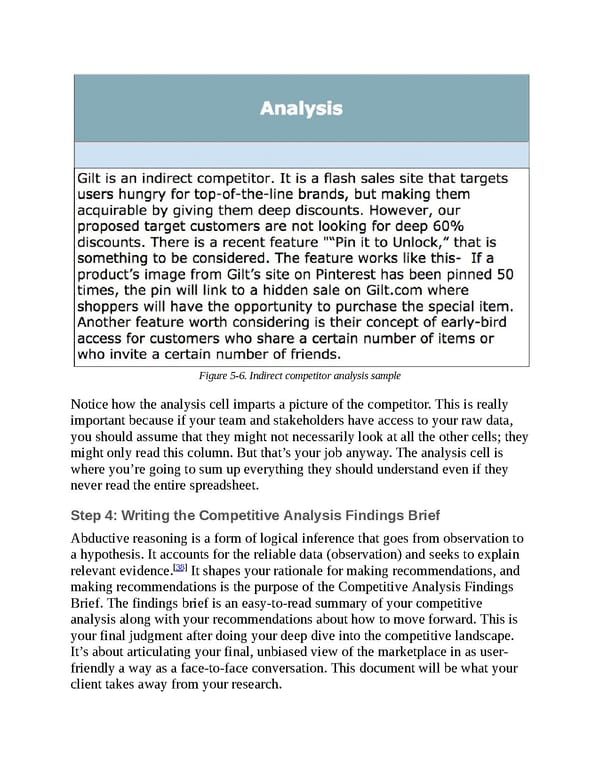Figure 5-6. Indirect competitor analysis sample Notice how the analysis cell imparts a picture of the competitor. This is really important because if your team and stakeholders have access to your raw data, you should assume that they might not necessarily look at all the other cells; they might only read this column. But that’s your job anyway. The analysis cell is where you’re going to sum up everything they should understand even if they never read the entire spreadsheet. Step 4: Writing the Competitive Analysis Findings Brief Abductive reasoning is a form of logical inference that goes from observation to a hypothesis. It accounts for the reliable data (observation) and seeks to explain [38] relevant evidence. It shapes your rationale for making recommendations, and making recommendations is the purpose of the Competitive Analysis Findings Brief. The findings brief is an easy-to-read summary of your competitive analysis along with your recommendations about how to move forward. This is your final judgment after doing your deep dive into the competitive landscape. It’s about articulating your final, unbiased view of the marketplace in as user- friendly a way as a face-to-face conversation. This document will be what your client takes away from your research.
 UX Strategy: How to Devise Innovative Digital Products that People Want Page 119 Page 121
UX Strategy: How to Devise Innovative Digital Products that People Want Page 119 Page 121